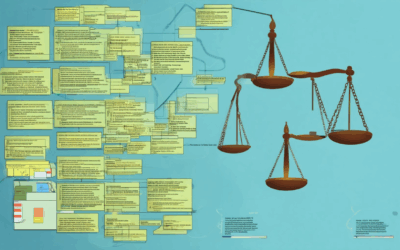Effective resource management is the cornerstone of any successful nonprofit organization, directly impacting its ability to achieve mission goals, build trust within communities, and sustain long-term growth. Whether it’s optimizing financial budgets, leveraging human capital, or maximizing the use of donated materials, managing nonprofit resources requires careful planning and strategic execution. In today’s competitive landscape, nonprofits that fail to implement robust resource management strategies risk falling behind, struggling to meet program demands, and missing opportunities to maximize their social impact. This comprehensive guide explores proven strategies, best practices, and practical tools designed to help nonprofit leaders effectively allocate and optimize resources, ensuring their organizations operate efficiently and deliver results. From streamlining operations to enhancing productivity, discover how smarter resource management can empower your nonprofit to thrive in an ever-evolving world.
Key Takeaways
- Prioritize mission-aligned initiatives and monitor resource allocations quarterly for optimal efficiency.
- Form strategic partnerships and effectively utilize volunteers to enhance program delivery and reduce operational costs.
- Enhance staff competencies through professional development and cross-training to maximize resource utilization.
- Adopt stringent financial controls and regularly conduct audits to ensure transparency and accountability.
- Streamline operations with donor management and project management software to boost collaboration and productivity.
- Measure program outcomes and adjust strategies using data analytics and stakeholder feedback for better impact.
- Diversify revenue streams through grants, sponsorships, and membership fees to minimize financial dependency.
- Collaborate with other nonprofits and businesses to share resources and expertise, amplifying your organization’s reach.
- Regularly evaluate resource use and adapt strategies to ensure maximum mission impact and long-term sustainability.
- Strengthen organizational capacity through training programs and mentorship to improve overall resource management effectiveness.

Effective Strategies for Managing Nonprofit Resources
To effectively manage nonprofit resources, consider implementing the following organized approach:
- Strategic Planning and Resource Allocation
Begin by aligning your nonprofit’s resources with its mission goals. Conduct regular assessments to identify inefficiencies and reallocate assets accordingly. Flexibility is key, as dynamic adjustments may be needed based on changing priorities or environmental shifts. - Financial Oversight and Cost Management
Control expenses while maximizing impact. Diversify revenue streams to reduce dependency on a single source. Implement transparent financial practices to build trust with donors and stakeholders. Regularly audit finances to ensure accountability and optimize spending. - Program Delivery and Impact Measurement
Measure program outcomes using data analytics to track progress toward goals. Collaborate with other nonprofits to share best practices and pool resources for greater reach. Continuously evaluate program effectiveness and adjust strategies as needed. - Technology Integration
Leverage digital tools to enhance efficiency. Utilize donor management systems and CRM software to streamline operations. Adopt cloud-based solutions for remote work and data accessibility. Invest in cybersecurity to protect sensitive information. - Stakeholder Engagement and Volunteer Management
Foster strong relationships with donors, board members, and volunteers. Recognize contributions and maintain open communication. Develop volunteer programs that align with organizational objectives and provide meaningful opportunities. - Continuous Improvement and Adaptability
Implement feedback loops to gather insights from stakeholders and adapt strategies. Engage in ongoing learning and professional development to stay updated on best practices. Encourage innovation to explore new approaches that enhance impact. - Crisis Management and Communication
Develop a crisis management plan to address challenges proactively. Communicate openly with stakeholders during difficult times to maintain trust. Show empathy and adaptability while seeking solutions.
By integrating these strategies, your nonprofit can optimize resource utilization and achieve its mission-driven goals more effectively. Explore more resources on NPO Expert to further enhance your nonprofit’s operational capabilities.
Best Ways to Manage Nonprofit Resources
Effective resource management is critical for the survival and growth of nonprofit organizations. Here are some proven strategies to optimize your nonprofit’s resource allocation and maximize impact:
- Budgeting and Financial Planning
- Create a realistic budget that aligns with your mission and goals.
- Track expenses meticulously to ensure funds are used efficiently.
- Regularly review and adjust budgets to adapt to changing needs.
- Resource Allocation
- Prioritize spending based on organizational impact and long-term goals.
- Invest in areas that directly contribute to program delivery and outreach.
- Minimize overhead costs while maintaining necessary operational functions.
- Technology Leverage
- Utilize donor management software to track contributions and donors.
- Implement a Customer Relationship Management (CRM) system for better stakeholder engagement.
- Explore digital tools to streamline administrative tasks and communication.
- Funding Diversification
- Seek multiple funding sources such as grants, donations, and sponsorships.
- Develop diverse revenue streams to reduce reliance on a single income source.
- Pursue crowdfunding platforms and corporate sponsorships to broaden financial support.
- Strategic Partnerships
- Collaborate with other NGOs and community organizations to share resources and expertise.
- Partner with local businesses for in-kind donations or co-branded initiatives.
- Engage with tech companies for discounted software or volunteer services.
- Risk Management
- Develop contingency plans to address potential challenges like funding shortfalls or natural disasters.
- Maintain an emergency fund to cover unexpected expenses.
- Stay informed about legal and regulatory changes that may impact operations.
- Volunteer Engagement
- Recruit, train, and manage volunteers effectively to supplement staff efforts.
- Recognize and appreciate volunteers through meaningful acknowledgment and opportunities for growth.
- Organize volunteer orientations and ongoing training sessions.
- Impact Measurement
- Track key performance indicators (KPIs) to measure program effectiveness and donor satisfaction.
- Conduct regular evaluations to identify strengths and areas for improvement.
- Share success stories and measurable outcomes to build trust with stakeholders.
- Continuous Learning and Adaptation
- Encourage professional development for staff and volunteers.
- Stay updated on nonprofit trends, technologies, and best practices.
- Be open to feedback and willing to adapt strategies to meet evolving needs.
By implementing these strategies, nonprofits can enhance their resource management capabilities, ensuring greater efficiency and impact. Explore more resources on NPO Expert to further optimize your organization’s operations.

Best Strategies for Managing Nonprofit Resources
To effectively manage nonprofit resources, consider implementing the following strategies:
- Diversify Funding Sources
Explore various revenue streams such as grants, sponsorships, and earned income activities like ticket sales or merchandise. This reduces reliance on donations alone and strengthens financial stability. - Optimize Budget Planning
Create a detailed budget that aligns with organizational goals. Regularly review and adjust expenses to ensure funds are used efficiently and effectively. - Leverage Technology
Adopt cloud-based tools and CRM systems to streamline operations, improve communication, and reduce costs. Utilize digital platforms for volunteer management and donor tracking. - Build Strategic Partnerships
Collaborate with other nonprofits, businesses, and government agencies to share resources, expertise, and opportunities. This expands your reach and enhances program impact. - Enhance Fundraising Efforts
Develop a comprehensive fundraising strategy that includes events, online giving, and major gift initiatives. Focus on building long-term relationships with donors through storytelling and personalized engagement. - Implement Risk Management Practices
Identify potential risks and develop mitigation strategies. Maintain contingency plans and appropriate insurance coverage to safeguard against unforeseen challenges. - Evaluate and Improve Programs
Conduct regular assessments of your programs and services. Use data to identify strengths and areas for improvement, ensuring maximum impact and efficiency. - Promote Volunteer Engagement
Recruit, train, and manage volunteers effectively. Provide meaningful roles and support systems to maximize their contributions and retention. - Adopt a Long-Term Perspective
Focus on sustainable growth by aligning actions with long-term goals. Attract like-minded partners and donors who share your mission and vision.
By integrating these strategies, your nonprofit can enhance operational efficiency, strengthen financial health, and amplify its social impact. For further insights and tools, explore our Nonprofit Resource Management Guide .

What Are the Best Practices for Managing Nonprofit Resources?
NPO Expert is committed to helping nonprofit organizations maximize their impact through effective resource management. Below are the top best practices for managing nonprofit resources, ensuring optimal efficiency and effectiveness.
1. Develop a Comprehensive Resource Allocation Plan
Effective resource management begins with a clear allocation plan. Assess your organization’s needs and prioritize critical areas such as program delivery, staff development, and operational costs. Use tools like budgeting software to track expenses and ensure funds are used strategically.
- Identify core programs and initiatives requiring immediate attention.
- Allocate resources based on long-term goals and community impact.
- Monitor and adjust allocations quarterly to adapt to changing needs.
2. Foster Collaboration and Volunteer Involvement
Nonprofits often rely on partnerships and volunteers to stretch limited resources. Build strong relationships with local businesses, schools, and community groups to share expertise and reduce costs. Actively recruit and manage volunteers to support core programs without overloading staff.
- Pursue partnerships with local businesses for donations or in-kind contributions.
- Utilize volunteer platforms to connect with skilled individuals willing to contribute their time.
- Establish clear roles and expectations for volunteers to ensure efficient program execution.
3. Invest in Training and Capacity Building
Staff competency is crucial for achieving mission objectives. Provide ongoing professional development opportunities to enhance skills in areas like fundraising, program management, and communication. Cross-training employees allows your organization to adapt quickly to changes and maximize resource utilization.
- Offer workshops and seminars led by industry experts.
- Encourage staff to pursue certifications in nonprofit management.
- Create a mentorship program to foster knowledge transfer within the organization.
4. Implement Robust Financial Oversight
Financial transparency and accountability are foundational to effective resource management. Establish a strong audit committee to oversee finances and ensure compliance with regulations. Regularly review financial statements and maintain strict control over expenditures to prevent misuse of funds.
- Conduct regular financial audits to identify inefficiencies.
- Document policies and procedures for expense reporting and procurement.
- Use financial software to streamline accounting processes.
5. Leverage Technology for Efficiency
Adopt digital tools to streamline operations and enhance collaboration. Use donor management systems to track contributions and maintain accurate records. Implement project management software to organize programs and monitor progress. Cloud-based solutions enable remote work and access to critical data anytime.
- Invest in donor management software like DonorPerfect or Salesforce.
- Use Trello or Asana for program tracking and team collaboration.
- Explore cloud-based accounting solutions for real-time financial insights.
6. Monitor and Evaluate Impact
Regularly assess the effectiveness of your programs and resource allocation. Use surveys, feedback forms, and data analytics to measure outcomes and adjust strategies as needed. Sharing success stories and lessons learned can inspire others and attract more support for your cause.
- Collect data on program outcomes using tools like SurveyMonkey.
- Share impact reports with stakeholders to demonstrate achievements.
- Use benchmarking tools to compare performance with peers.
By implementing these best practices, your nonprofit can optimize resource usage, enhance program delivery, and achieve greater mission impact. Remember, effective resource management is not just about saving money—it’s about investing in what matters most to your organization and the communities you serve.
For further reading, explore our guides on nonprofit management , fundraising strategies , and compliance requirements .
Effective Ways to Manage Nonprofit Resources
To maximize efficiency and ensure sustainable operations, nonprofit organizations must adopt strategic approaches to resource management. Below are proven strategies to help achieve this:
- Adopt a Strategic Resource Management Approach
- Begin by aligning resource allocation with organizational goals. Create a detailed budget that prioritizes mission-critical activities while minimizing waste.
- Regularly assess resource needs through needs assessments and financial audits to ensure alignment with program objectives.
-
Diversify Funding Sources
- Explore various revenue streams including donations, grants, sponsorships, and membership fees. Diversification reduces reliance on any single source of income.
- Actively seek out funding opportunities through grant writing, corporate partnerships, and special events to strengthen financial stability.
-
Leverage Technology for Resource Optimization
- Invest in donor management systems and accounting software to streamline operations and improve financial tracking.
- Utilize digital tools to enhance communication, volunteer coordination, and program delivery, ensuring resources are used effectively.
-
Foster Strategic Partnerships
- Collaborate with other nonprofits, businesses, and community organizations to share resources and expertise.
- Seek partnerships that offer in-kind contributions, shared services, or joint initiatives to reduce costs and extend reach.
-
Implement Continuous Monitoring and Evaluation
- Regularly monitor resource utilization through financial reports and impact evaluations to ensure funds are used appropriately.
- Adjust strategies based on feedback and performance data to continuously improve resource management practices.
-
Invest in Capacity Building
- Train staff and volunteers to enhance skills in areas like fundraising, program management, and financial oversight.
- Build organizational capacity through workshops, consulting services, and mentorship programs to improve overall resource utilization.
By implementing these strategies, nonprofits can effectively manage resources, enhance operational efficiency, and maximize their social impact. For further insights, explore our comprehensive guide on nonprofit resource management .

Effective Allocation and Optimization of Nonprofit Resources
Allocating and optimizing nonprofit resources requires a strategic approach that balances mission goals with financial and operational efficiency. Here’s a step-by-step guide to achieving this:
- Define Core Objectives : Begin by clearly identifying your nonprofit’s primary mission-driven goals. This ensures that all resource allocations align with your organization’s purpose.
- Assess Current Capacity : Conduct a thorough analysis of your organization’s capabilities, including staffing, technology, and infrastructure. This helps in identifying gaps and areas for improvement.
- Leverage Technology : Invest in tools and software that enhance productivity and reduce costs. Platforms like NPO Expert offer resources for nonprofit tech solutions.
- Foster Strategic Partnerships : Collaborate with other nonprofits, businesses, and volunteers to share resources and expertise. This can significantly amplify your impact without increasing expenses.
- Diversify Funding Sources : Explore various revenue streams such as grants, donations, and sponsorships. Diversified funding reduces reliance on any single source and strengthens financial stability.
- Regularly Monitor and Adjust : Continuously track the effectiveness of your resource allocation through metrics like program outcomes, budget utilization, and stakeholder feedback. Adjust strategies as needed to maximize impact.
By following these strategies, nonprofits can optimize resource allocation to achieve greater mission success while maintaining long-term sustainability. For further insights and tools, visit NPO Expert to discover proven approaches for nonprofit management and growth.





0 Comments